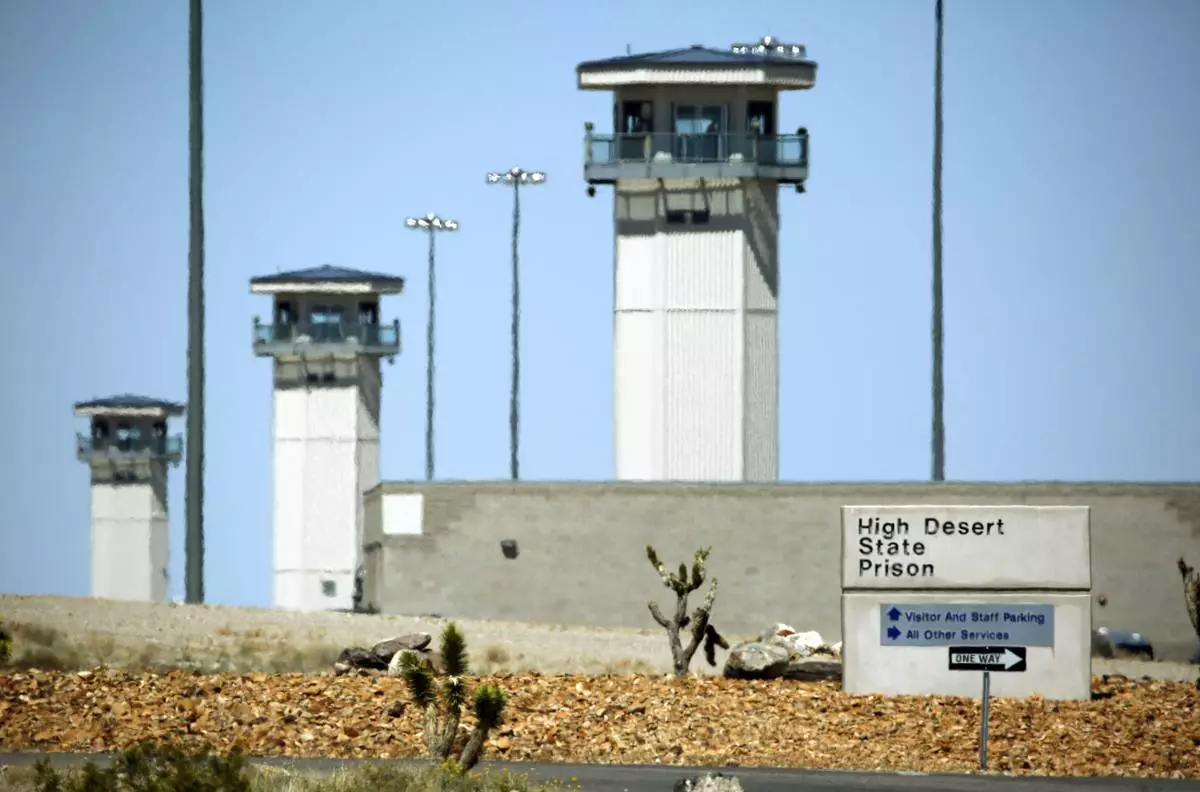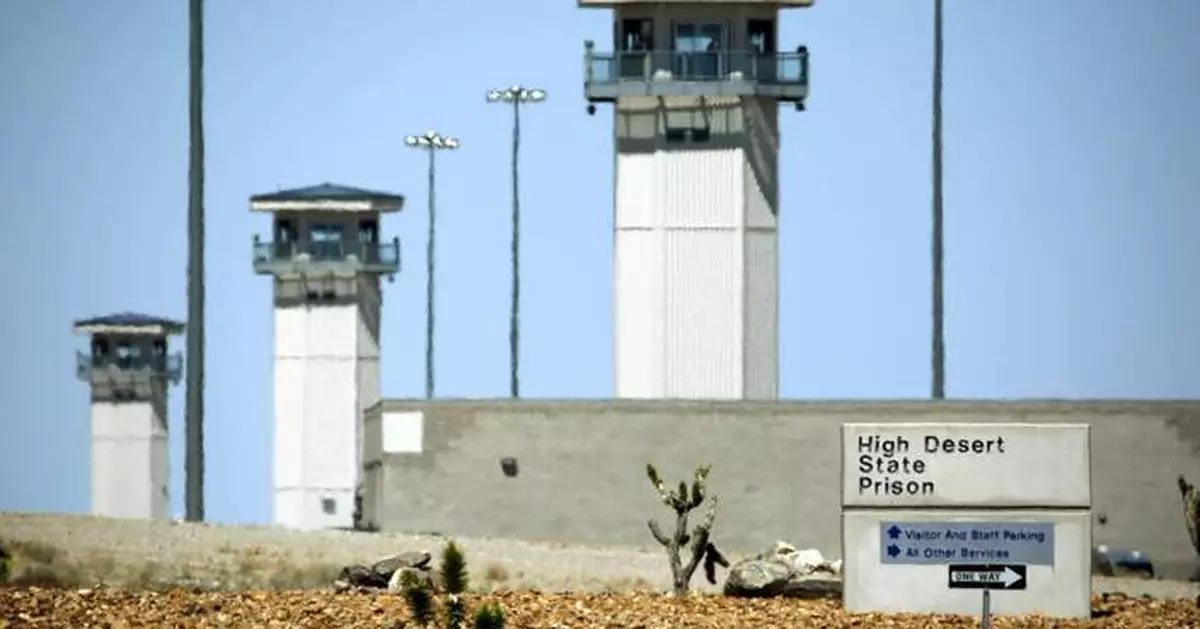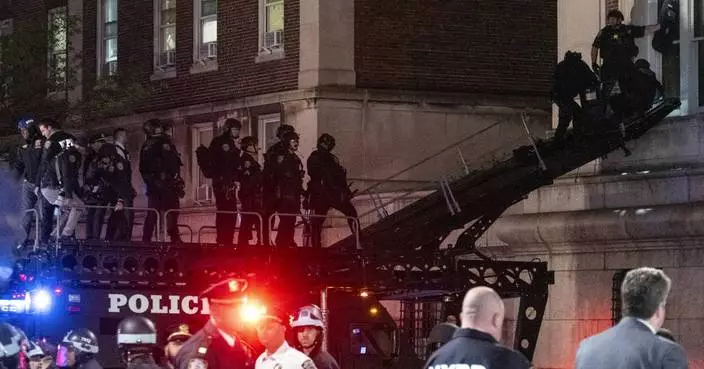LAS VEGAS (AP) — The mother of a Nevada inmate who died a year ago after he was beaten by corrections officers has filed a lawsuit accusing prison staff of conspiring with the coroner's office in Las Vegas to cover up the death.
Annette Walker alleges in the lawsuit filed late Thursday in Clark County District Court that her son, Christian, was viciously beaten by guards on at least two separate occasions and left to die at High Desert State Prison near Las Vegas, and that a larger pattern of excessive force exists within the state’s prison system.
“This lawsuit stands for something much, much larger than just Christian,” the lawsuit says. “It stands for all those who came before and will come after Christian Walker.”
Walker's face was swollen and smeared with blood when he died in custody last April, according to the lawsuit and an unredacted copy of his autopsy report obtained by The Associated Press. He also suffered head trauma and other injuries to his torso, neck and extremities.
The medical examiner concluded it was a natural death caused by heart problems.
Lary Simms, a forensic pathology expert who worked for 25 years as a medical examiner in Las Vegas and Chicago, reviewed Walker's autopsy report and medical records for the plaintiffs. He recommended a “complete re-evaluation” of Walker's death.
The medical examiner's “microscopic description” of Walker’s apparent heart problems in the autopsy report doesn't square with the final ruling, Simms wrote in an affidavit filed with the lawsuit.
The state Department of Corrections and its director, James Dzurenda, several prison administrators, medical staff and unnamed guards, along with the Clark County coroner's office, are listed as defendants. Both the corrections department and the county declined to comment Friday.
Walker was 44 when he died on April 15, 2023. He had spent more than two dozen years behind bars after being convicted of second-degree murder in the 1997 death of his then-girlfriend. He sought unsuccessfully to reduce the charge to manslaughter in 2001.
His family described him in the lawsuit as a man of faith who avoided trouble in prison. He worked as an auto mechanic and a barber. He earned certificates in Christian studies and computer programming while housed since 1999 at Southern Desert Correctional Center, a mostly medium-security prison in Las Vegas, the lawsuit states.
According to the lawsuit and autopsy report, Walker was experiencing extreme paranoia and had been struggling with losing his train of thought when he was transferred to nearby High Desert State Prison, a mixed-security facility.
It wasn't long before Walker was “brutally assaulted with batons and sprayed with pepper spray,” the lawsuit states, causing him to lose consciousness.
Prison staff said Walker had repeatedly ignored commands and showed aggression toward officers, leading them to restrain him with batons and their hands, according to the autopsy.
Walker was taken to a hospital in Las Vegas and struggled to speak. First responders described a slew of injuries in their medical report, including “raccoon eyes” and “uncontrolled bleeding” on his scalp, face and lips, according to the lawsuit.
He was discharged from the hospital hours later and taken back to the prison, where guards beat Walker with batons a second time the following day, the lawsuit alleges.
Walker was placed alone in a cell in the prison infirmary, a unit where he could be overseen by medical staff, according to the lawsuit. Yet the lawsuit claims that officers and prison medical staff did not check on Walker that night, even as he was “lying in a pool of blood, moaning" under a metal frame bed.
He was dead by morning, found nude, bloodied and unresponsive on the floor.
Along with wrongful death, the lawsuit accuses the corrections department of cruel and unusual punishment against Walker, as well as negligence by the guards and prison medical staff. It also accuses the coroner’s office of deliberate indifference.
The timeline of the beatings described in the lawsuit differ from the dates listed in Walker's autopsy.
James Urrutia, the attorney for Walker’s family, told the AP that the timeline laid out in the lawsuit largely is based on Walker's medical records and statements from witnesses, including first responders. But he said the full picture of how Walker died isn't complete because the corrections department has denied the law firm's repeated requests for security footage and other records.
Associated Press writer Scott Sonner in Reno, Nevada, contributed to this report.
Stern reported from Reno. He is a corps member for the Associated Press/Report for America Statehouse News Initiative. Report for America is a service program that places journalists in local newsrooms. Follow Stern on X: @gabestern326.

FILE - Towers view over the High Desert State Prison in Indian Springs, Nev., April 15, 2015. The mother of a Nevada prisoner who died in custody in April 2023 alleges in a new lawsuit filed late Thursday, April 11, 2024, that her son, Christian Walker, was violently beaten by prison guards and left to die at High Desert State Prison near Las Vegas. (AP Photo/John Locher, File)
WASHINGTON (AP) — After three straight hotter-than-expected inflation reports, Federal Reserve officials have turned more cautious about the prospect of interest rate cuts this year. The big question, after they end their latest policy meeting Wednesday, will be: Will they still signal rate cuts at all this year?
Wall Street traders now envision just a single rate cut this year to the Fed's benchmark rate, now at a 23-year high of 5.3% after 11 hikes that ended last July. Traders have sharply downgraded their expectations since 2024 began, when they had expected up to six rate cuts.
As recently as the Fed's last meeting March 20, the policymakers themselves had projected three rate reductions in 2024. Rate cuts by the Fed would lead, over time, to lower borrowing costs for consumers and businesses, including for mortgages, auto loans and credit cards.
Most economists say they still expect two cuts this year. But many acknowledge that one or even no rate reductions are possible. The reason is that elevated inflation is proving more persistent than almost anyone had expected. According to the Fed's preferred gauge, inflation reached a 4.4% annual rate in the first three months of this year, up from 1.6% in the final quarter of 2023 and far above the Fed's 2% target.
At the same time, the economy is healthier and hiring is stronger than most economists thought it would be at this point. The unemployment rate has remained below 4% for more than two years, the longest such streak since the 1960s. During the first quarter of the year, consumers spent at a robust pace. As a result, Chair Jerome Powell and other Fed officials have made clear that they are in no hurry to cut their benchmark rate.
In his most recent remarks two weeks ago, Powell indicated that the pace of price increases had essentially undercut Fed officials' confidence that inflation was steadily heading back to their target, thereby making rate cuts anytime soon less likely. He also said the Fed would forgo any rate cuts as long as inflation remained elevated. He stopped short, though, of suggesting that any new rate increases were under consideration.
“If higher inflation does persist,” the Fed chair said, “we can maintain the current level of (interest rates) for as long as needed.”
Most economists expect Powell to reinforce that message during the news conference he will hold after the Fed's meeting ends Wednesday. But he could go still further.
During his last news conference in March, for example, Powell said the Fed's rate was “likely at its peak” and that, “if the economy evolves broadly as expected, it will likely be appropriate” to start cutting rates this year.
If Powell avoids repeating that sentiment this time, it could suggest that the Fed is less likely to reduce its benchmark rate this year.
“If that (message) is dropped, I think it would be a much stronger signal that we have to hold rates higher for longer,” said Jonathan Pingle, chief economist at UBS.
Though economic growth reached just a 1.6% annual pace in the first three months of this year, a slowdown from the previous quarter, consumer spending grew at a robust pace, a sign that the economy will keep expanding.
That persistent strength has caused some Fed officials to speculate that the current level of interest rates may not be high enough to have the cooling effect on the economy and inflation that they need. If so, the Fed could even have to switch back to rate increases at some point.
“I continue to see the risk that at a future meeting we may need to increase (rates) further should progress on inflation stall or even reverse,” Michelle Bowman, a member of the Fed's Board of Governors, said in early April.
On Wednesday, the Fed may also announce that it's slowing the pace at which it unwinds one of its biggest COVID-era policies: Its purchase of several trillion dollars in Treasury securities and mortgage-backed bonds, an effort to stabilize financial markets and keep longer-term interest rates low.
The Fed is now allowing $95 billion of those securities to mature each month, without replacing them. Its holdings have fallen to about $7.4 trillion, down from $8.9 trillion in June 2022 when it began reducing them.
By cutting back its holdings, the Fed could contribute to keeping longer-term rates, including mortgage-rates, higher than they would be otherwise. That's because as it reduces its bond holdings, other buyers will have to buy the securities instead, and rates might have to rise to attract the needed buyers.
During its meeting in March, Fed official agreed to reduce the pace of its runoff to about $65 billion a month, according to the meeting minutes.
The Fed last reduced its balance sheet in 2019, and while doing so it inadvertently disrupted financial markets and caused short-term interest rates to spike that September. Its goal in slowing the pace at which it reduces its bond ownership is to avoid a similar market disruption by moving more methodically.

FILE - Federal Reserve Board chair Jerome Powell speaks during a news conference at the Federal Reserve in Washington, March 20, 2024. The Federal Reserve wraps up its two-day policy meeting Wednesday, May 1, 2024. Most analysts expect that the central bank will leave its benchmark borrowing rate alone for the sixth straight meeting. (AP Photo/Susan Walsh, File)











